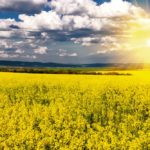The word “organic,” just like “environmental” has become confusing over the last 20 or 30 years. Organic food for example? All the food we eat is organic (except salt or other minerals). All farming activities are environmental, but every misinformed urbanite calls him or herself an environmentalist. “Soil organic matter” is made up of a […] Read more













